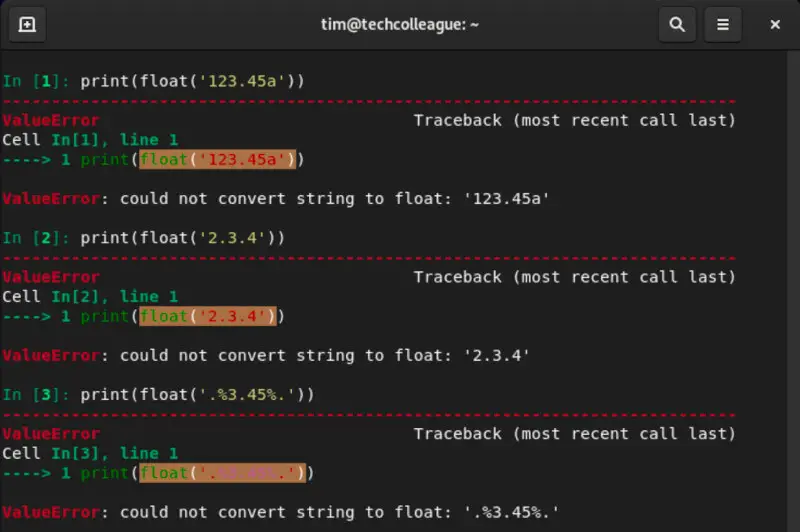The Python “ValueError: could not convert string to float” occurs when you try to convert a string value to a float, and the string cannot be appropriately formatted to a float.
In this article, I’ll review some of the common causes of this error and how you can fix them.
Understanding the Error
Before we dive into how to fix this error, it’s important to understand what’s causing it. The “ValueError: could not convert string to float” error is raised when you try to convert a string to a float, and the string is not in a proper format for a float.
This can happen for some reasons, such as:
- The string contains non-numeric characters
- The string contains multiple dots (e.g., “2.5.6”)
- The string contains leading or trailing non-numeric characters
Here are a few examples of strings that would raise this error when you try to convert them to a float:

Common Causes of the Error
Now that we understand what’s causing the error, let’s look at some of the common causes of this error and how to fix them.
Related: [Solved] “TypeError: ‘list’ object is not callable” in Python
Non-Numeric Characters
One of the most common causes of this error is when the string contains non-numeric characters. For example, the string “123.45a” would raise the “ValueError: could not convert string to float” error because it contains the letter “a” which is not a numeric character.
You’ll need to remove any non-numeric characters from the string to fix this. There are a few different ways you can do this, such as:
- Use a regular expression to remove all non-numeric characters from the string:

- Use the
isnumeric()method to check if each character in the string is numeric:

- Use the
replace()method to remove all non-numeric characters from the string:

Multiple Dots
Another common cause of this error is when the string contains multiple dots. For example, the string “2.5.6” would raise the “ValueError: could not convert string to float” error because it contains two dots, which is not a valid format for a float.
You’ll need to remove all but one of the dots from the string to fix this. You can do this using the replace() method:

Leading or Trailing White Space
Another common cause of this error is when the string contains leading or trailing non-numeric characters. For example, the string “.%3.45%.” would raise the “ValueError: could not convert string to float” error because it contains leading and trailing non-numeric characters.
To fix this, you can use the strip() method to remove any leading and trailing characters from the string:

Conclusion
In this article, we covered the Python “ValueError: could not convert string to float” error and some of the common causes of this error. We also looked at ways to fix this error.
By following the steps outlined in this article, you should be able to successfully convert strings to floats and avoid this error in the future.







